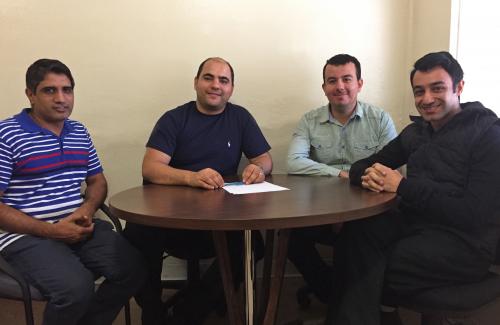
Abdessattar Abdelkefi, mechanical and aerospace engineering assistant professor, second from left, is pictured with three of his New Mexico State University Ph.D. students. From left, Rashid Naseer, Hichem Abdelmoula and Mostafa Hassanalian assist Abdelkefi with projects including an energy harvester for pacemakers.